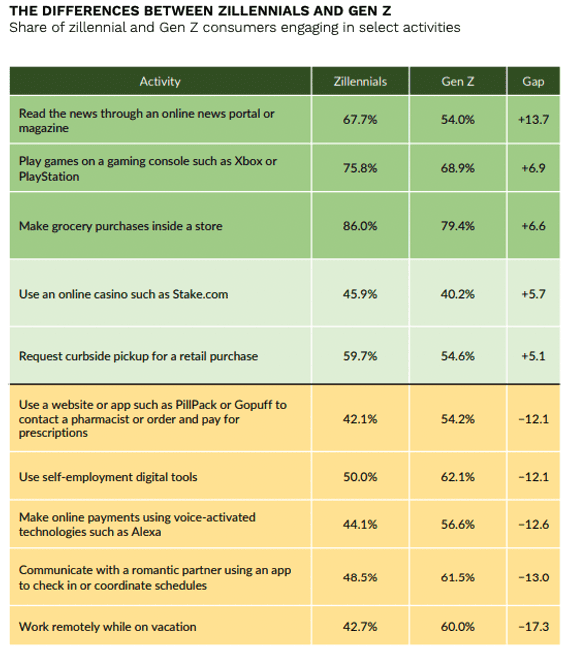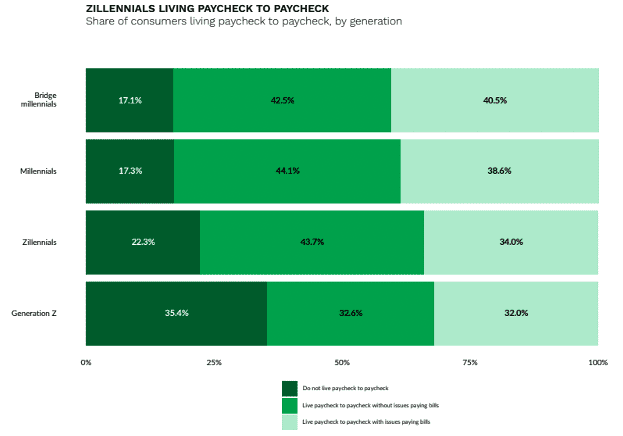‘Zillennials’ With Steady Income, Few Bills Are Prime Retail Opportunity

With steady income and limited expenses, so-called “zillennials” are becoming a retail spending force and favorite.
Sandwiched between “millennials” and “Generation Zs,” this micro-demographic born between 1990 and 2000 makes up roughly 30 million consumers of true digital natives who have never known a world without the internet and mobile phone. Add in the frequency of subsidized living situations and this economic bloc of buyers earns an outsized appeal in the retail industry, especially among mobile commerce-minded brands.
The ConnectedEconomy™ Monthly Series report “Meet the Zillennials” noted that over one-third of this group (the oldest of which turns 33 this year), totaling roughly 11 million consumers, still live with parents and siblings, and hence don’t usually pay for rent or utilities.

They also have jobs — gig or otherwise — and this combination of disposable incomes and lack of bills gives them disproportionate amounts of money to spend on goods and experiences.
Additionally, we found that over half of this group (54%) is employed full time and 12% work part time, indicating that “most zillennials have already made the transition to full-time jobs and thus have more income.” Half of all zillennials are using gig work platforms to find work.
As to where they’re spending and on what, the survey of nearly 4,000 U.S. consumers found that 85% are engaging with video streaming platforms and social media platforms, and 81% with music streaming platforms and mobile games/gaming platforms.
This all adds up to a major opportunity for mobile commerce as this is the generational cohort that lives in its smartphone perhaps more than any other.
“Zillennials are also more digitally engaged than millennials when it comes to gaming and using social media,” the study found. “Six percent more zillennials are console gamers than millennials, for instance.”
“There are also several areas where zillennials are even more engaged than Gen Z,” the study added. “They are 25% more likely to read news through online portals and 10% more likely to play games on consoles like Xbox and PlayStation than Gen Z. They are also 14% more likely than Gen Z to use online casinos and 9% more likely to make retail purchases online for curbside pickup.”

This also suggests an eCommerce penchant among mobile-centric zillennials with incomes and relatively few financial responsibilities. Cross-referencing data from “Meet the Zillennials” and the previous PYMNTS study “Digital Economy Payments: November 2022 U.S. Edition — The Rise of Mobile eCommerce,” in the third quarter of 2022, mobile devices were used by 15% of consumers for non-grocery shopping, and that number is growing as zillennials gain buying power.
The earlier report noted that “the shift toward doing more online and less in-store has continued, and the role of eCommerce in driving retail revenue remains significant. Currently, eCommerce represents 21% of total retail sales based on PYMNTS’ Quarterly Payments Survey and Bureau of Economic Analysis (BEA) data.”
As more zillennials generate incomes but continue to live with family and avoid living costs like rent, mortgages and utility payments — many don’t even yet pay for their own mobile phone service — more of that disposable income is being directed toward merchandise and entertainment.
We see this in the fact that zillennials are less likely than all other groups except Gen Z to be living paycheck to paycheck and struggling. The study found that 40.5% of bridge millennials are in that bind, as are 38.6% of millennials.
By comparison, 34% of zillennials reported living paycheck to paycheck and struggling, while 43.7% were living between checks but not struggling with expenses, and nearly one-quarter (22.3%) said they do not live paycheck to paycheck at all.
For all PYMNTS retail coverage, subscribe to the daily Retail Newsletter.
